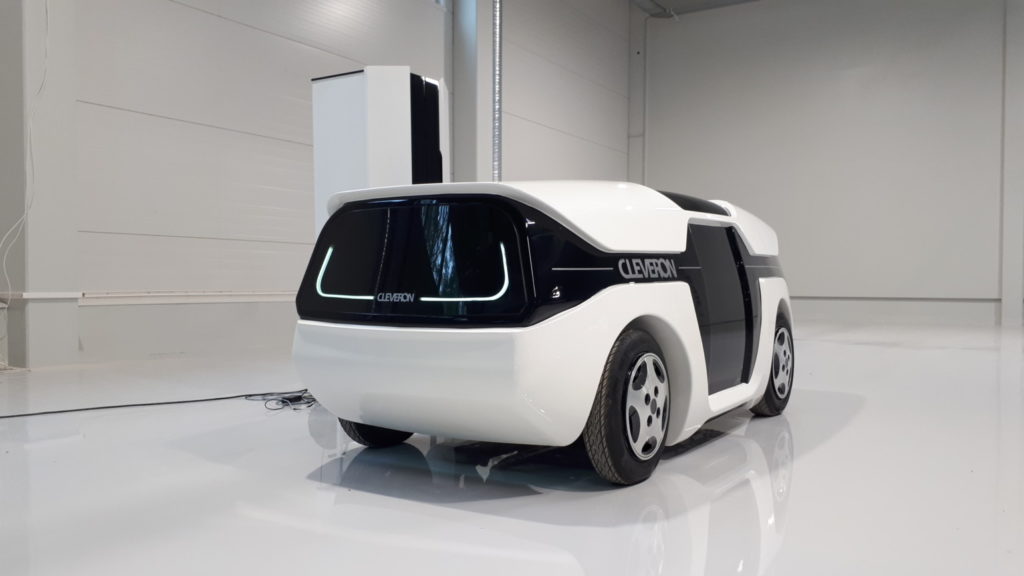Has Cleveron solved the ‘final foot’ problem with robot delivery? Ian Kerr (Postal Hub Podcast) and Marek Różycki (Last Mile Experts) dissect the latest innovation in autonomous delivery and consider its potential for success.
Estonian automated delivery company Cleveron has created quite a stir with its latest concept video, showing an autonomous ground vehicle (AGV) delivering parcels to parcel lockers. This is not the first delivery robot coming from Estonia; Starship has been piloting its last-mile robots for some years now.
The video shows parcels being manually loaded into the delivery robot at the warehouse. The four-wheeled AGV then makes its way out into the suburbs by road (Starship’s AGV uses pavements). It stops outside a free-standing parcel locker, then a robotic arm extends from the vehicle, placing the parcel on a shelf in the locker. The customer is notified of the delivery and can then collect the parcel from the locker.
Does it solve the drawbacks of earlier AGVs?
The concept looks like a ‘step up’ from its Starship competitor because it uses the roads, thus avoiding potential collisions with pedestrians, and because it doesn’t require the consignee to be at home thanks to the locker element.
All clear then, Cleveron 1 – Starship 0? Well, the answer is ‘perhaps’, because there are still some issues we need to understand:
Availability of lockers
For this concept to work a network of proximate and ‘robot-friendly’ lockers is needed to enable the AGV to deposit the parcel. If there aren’t enough lockers, or they are too far from the customer, then the delivery may fail and/or customer experience is poor.
Reserving space in front of the locker to allow the AGV’s robotic arm to deliver the parcel could be problematic. In Australia, wheelie bins would invariably be left in front of the lockers. In Italy, cars would be double-parked there. In Holland, access would be blocked by dozens of push bikes.
Road rage
The video doesn’t state how fast the AGV drives, but we assume it won’t be too fast to reduce the risk of pedestrian casualties. If this is the case, other drivers may become frustrated and seek to ‘bump’ the robot out of the way, or, more likely, blame them for traffic jams.
Similarly, all of the issues faced by autonomous vehicles can apply here; often the AGV is not to blame but people fear what is new and seek to blame the new technology – in the same way that air travel is considered dangerous by many, even though statistically it is much safer than traveling by car.
Security
There are also issues with security. These AGVs will have 360° cameras but in some less salubrious urban areas, gangs of youths could just pick it up and break open the loading area. There have already been cases of ‘robot muggings’, so this is potentially a real issue. Less likely perhaps, but a fast-moving thief could snatch the parcel from the delivery locker while the AGV is in the process of making the delivery.
In the streets by 2020?
Cleveron says these AGVs will be in the streets by 2020. It’s possible, of course, but will it be a cost-effective alternative to existing delivery options? Who would pay for the lockers? The public has been reluctant to pay for sophisticated personal parcel lockers. An Post has had success with its DeliveryBox solution – which is simple, contains no electronics, and costs just €69.99 (US$79.95).
Then there’s the issue of suitability. This solution might work in the suburbs or in the country, but seems inappropriate for dense urban areas or apartment blocks; the robot couldn’t conceivably travel to the mail room or concierge, especially where there are steps or access controls.
One of the advantages of this model, though, is its capacity to deliver at night. An electric AGV, moving at moderate speed, would be quiet enough to effect night-time deliveries without disturbing residents. And there wouldn’t be a driver earning double-time for working in the small hours of the morning.
Let’s see where this project goes but it is clearly a step up from Starship’s current solution in terms of customer experience, and we like innovation in this space. But it does require a dense and suitable network of lockers.
Bio:

Marek Różycki is managing partner at Last Mile Experts, specializing in CEP and e-commerce last-mile advisory.
 Ian Kerr is the founder and host of the Postal Hub Podcast, the weekly podcast for the postal and delivery sectors.
Ian Kerr is the founder and host of the Postal Hub Podcast, the weekly podcast for the postal and delivery sectors.


